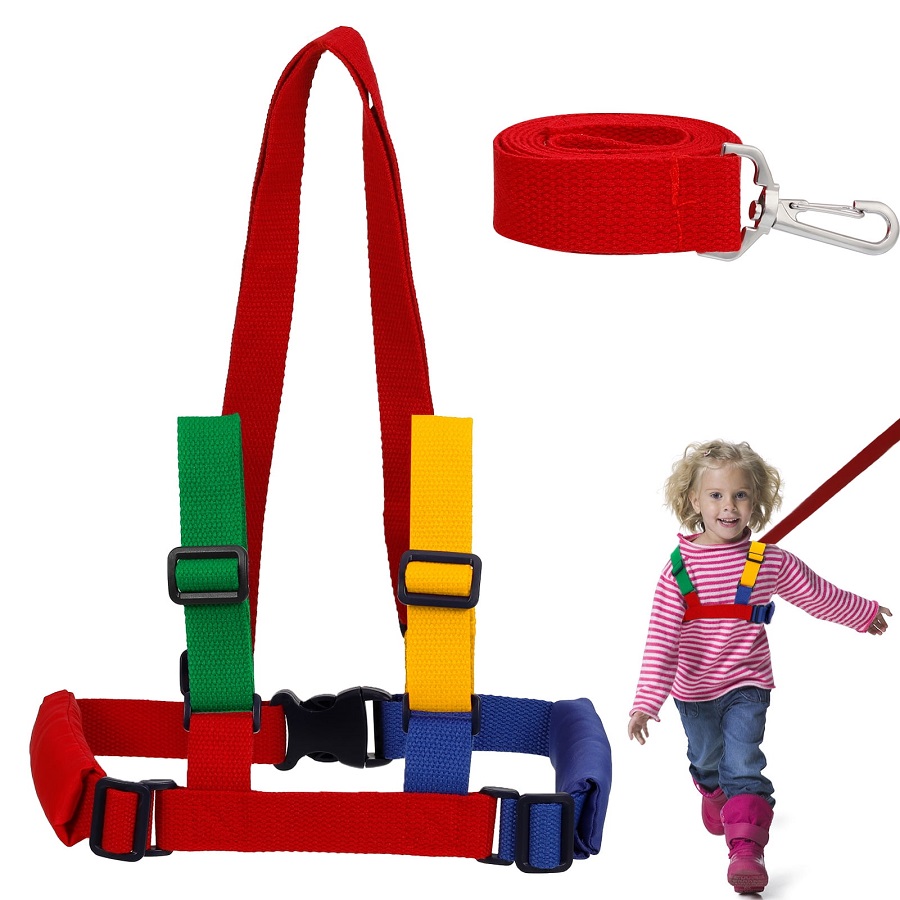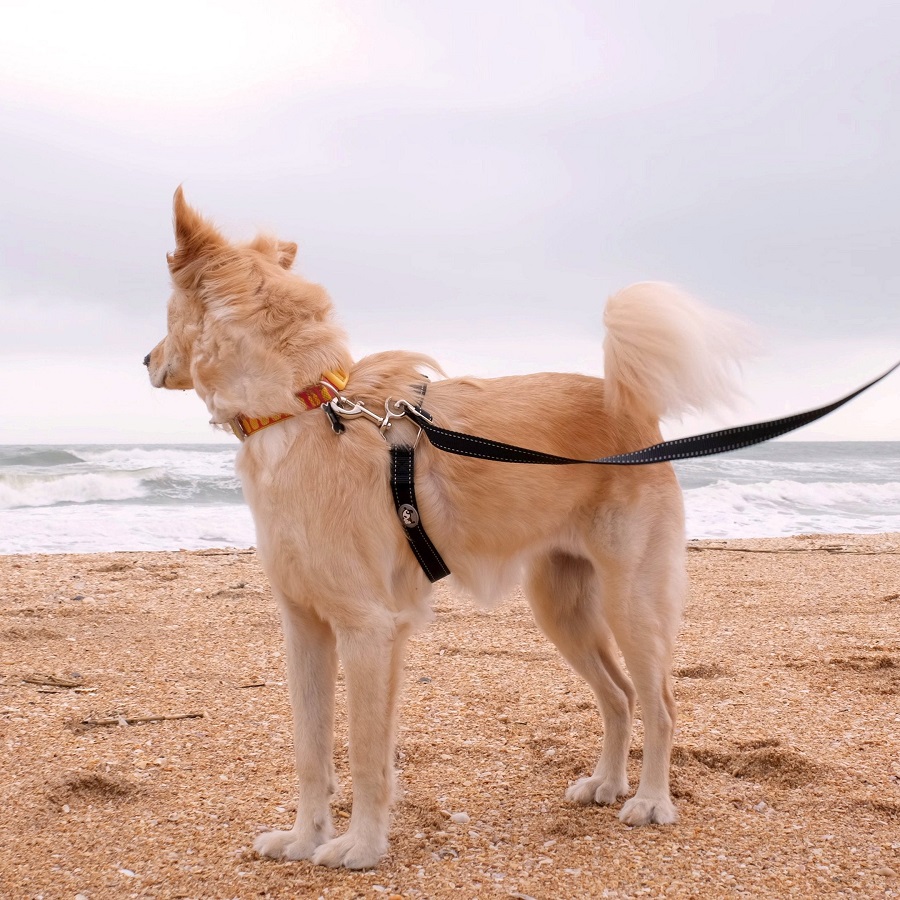The Controversy of Leashing Your Child: A Parental Dilemma
The topic of children on leashes often sparks intense debate among parents and onlookers. On one hand, some see the use of a toddler leash as a necessary safety precaution to prevent kids from wandering off in crowded or dangerous areas. On the other, there is harsh criticism for what some perceive as treating children like pets rather than people.
The dilemma arises from a desire to keep children safe while also promoting their autonomy and self-trust. The image of a child on a leash clashes with societal norms of how we expect free-willed individuals to be treated. It’s a balance between protection and the potential impact on a child’s development and dignity.
Parents who choose to use leashes often cite safety as their primary concern. They share stories of energetic toddlers who could sprint into harm’s way the moment attention is diverted. For them, a toddler leash is not a tool of control, but one of love and responsibility.
Yet, the stigma attached to leashing a child is undeniable. It can come with demeaning looks and comments from strangers, adding stress to already overwhelmed parents. The fear of being labeled a ‘bad parent’ for using a leash is a powerful deterrent, pushing many to seek alternatives.
Despite the clear controversy, the central question remains: What is the best way to keep our children safe without compromising their psychological well-being or our societal values? It’s a question with no simple answer, and it reflects the complex nature of parenting.
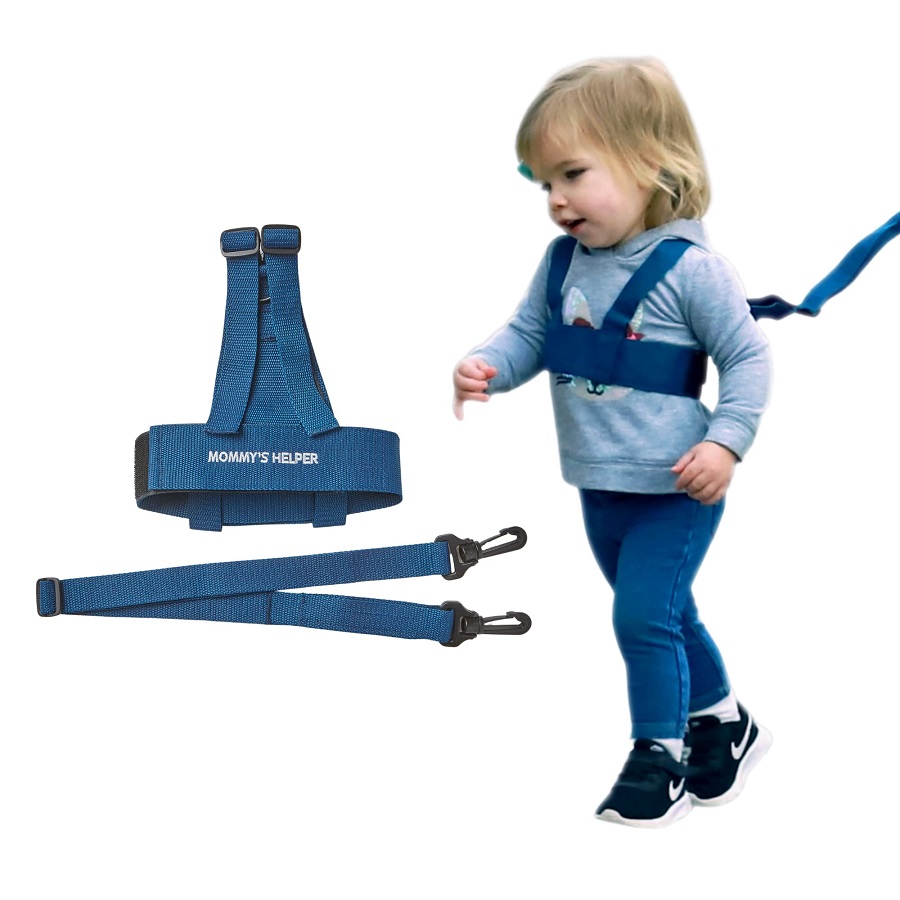
Understanding Child Safety in Public Spaces
Navigating public spaces with a toddler can be fraught with risks. Open areas may seem inviting but often conceal hazards. Streets teem with cars; parks, with unfenced ponds or pools. Children, in their curiosity and zest, are oblivious to these dangers, which include not only traffic but also the risk of getting lost in a crowd. The challenge for parents is to protect their young ones while fostering exploration and fun.
The bustling environment of a shopping mall, the allure of an amusement park, or the chaos of city sidewalks can quickly turn from an adventure to a parent’s nightmare. Herein lies the temptation to use child leashes. A toddler leash can act as a safeguard, a temporary solution in a fast-paced world that’s not designed for the unpredictable nature of young children.
However, even when considering a leash, parents must weigh its implications. A critical aspect is understanding children’s developmental needs. Toddlers learn by touching, seeing, and wandering. Their growth includes learning boundaries and understanding safe behaviors, which can be hampered by too much restriction.
Thus, the core of the issue revolves around a tightrope walk between ensuring safety and permitting freedom. Parents seek methods that protect while empowering their children to learn from their environment. This balancing act is never easy and often invites criticism or concern from others, reflecting the nuances and difficulties embedded in modern parenting choices.
Alternative Parenting Strategies to Child Leashes
When it comes to keeping toddlers safe, many parents seek alternatives to child leashes. These methods aim to promote safety without constraining a child’s freedom to explore. Here are several strategies parents might consider instead of leashes to manage their toddlers in public spaces:
- Close Supervision: Always stay within arm’s reach. Keep a watchful eye on your child’s movements.
- Hand-Holding: Encourage your child to hold your hand, especially in crowded or risky areas.
- Teach Boundaries: Help your child understand safe limits. Practice these lessons in controlled environments.
- Use of Strollers: When practical, a stroller can keep a child secure while allowing them to observe their surroundings.
- Scheduled Breaks: Allow children to explore in designated safe zones. This can prevent restlessness and running off.
- Distraction with Toys: Bring items to keep your child’s attention. This reduces their urge to wander.
- Identification Tools: Use ID bracelets or safety tattoos with contact information in case they get lost.
- Positive Reinforcement: Praise your child when they stay close. This encourages good behavior.
- Safety Gear: Equip your child with reflective clothing or a safety vest, making them more visible.
These strategies can offer peace of mind in public spaces. They balance child autonomy with the need for protection. Parents can cultivate exploration while maintaining a degree of control over potential dangers. However, safety measures will vary for each child, family, and situation. Flexibility and understanding of one’s child play key roles in navigating public spaces without leashes.
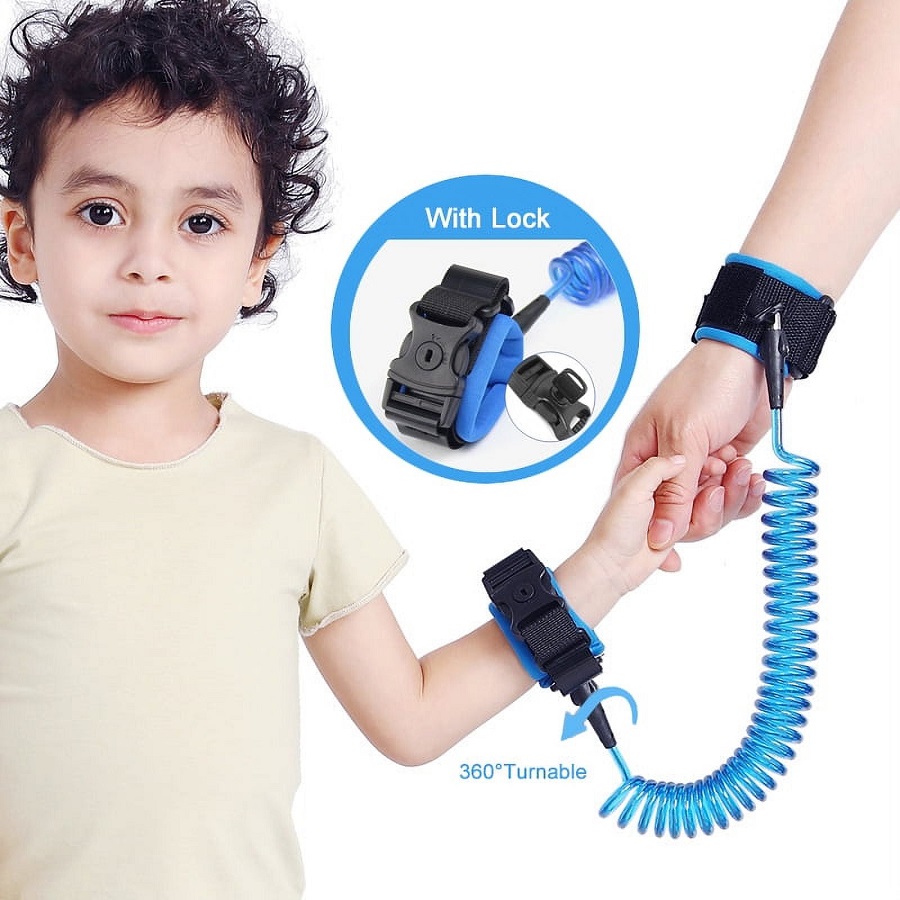
The Psychological Impact of Leashes on Young Children
The debate about using leashes for toddlers is not just about safety. It also concerns the psychological effects these restraints may have on young children. Here are some key aspects to consider:
- Perception of Freedom: A leash may limit a child’s sense of freedom and independence.
- Social Interactions: Being on a leash can affect a child’s ability to interact with peers.
- Frustration and Rebellion: A child might feel frustrated by the restrictions and act out.
- Dependency: Long-term use could create a reliance on the leash for safety.
- Confidence: A leash might undermine self-confidence by suggesting they can’t be trusted.
- Stigmatization: Kids might feel embarrassed or different from others if leashed in public.
Experts in child psychology underscore that parental guidance is pivotal. They highlight the importance of nurturing autonomy within safe boundaries. Parents should judiciously use leashes, if at all, while balancing these psychological implications with the child’s need to explore and learn independently.
Practical Tips for Managing Toddlers Without Leashes
Managing toddlers in public spaces demands creativity and patience. Here are practical tips to guide parents:
- Keep Engaged: Interact with your child. Discuss surroundings to keep them involved and close.
- Visual Contact: Ensure you can always see your child. Make eye-contact to reinforce presence.
- Child-Friendly Itinerary: Plan visits around your child’s interests. Engaging spots can keep them anchored.
- Practice Sessions: Rehearse public outings. Teach how to stay close and respond to calls.
- Safety Talks: Explain dangers. Use simple terms for youngsters to grasp.
- Clear Rules: Set boundaries. Be consistent with rules about staying near during outings.
- Designated Play Areas: Choose safe spaces. Let kids explore these areas under supervision.
- Reinforcement Learning: Reward good behavior. Offer treats or praise when kids follow safety rules.
- Buddy System: Pair up with another adult. Help each other keep an eye on roaming toddlers.
Finding the right balance between safety and freedom is key. Use these tips to manage your child confidently, without the need for leashes.
Opinions from Experts: Child Development and Restraints
Experts weigh in on the child leash debate. They focus on impacts to development and behavior.
Child Psychologists on Freedom and Growth
Psychologists caution against using leashes for long periods. They argue it can hinder a child’s natural growth. Leashes may limit exploration, a key part of learning. They might also stop kids from testing their boundaries safely.
Developmental Experts on Autonomy and Confidence
Developmental experts emphasize the need for autonomy. Confidence can suffer if a child feels too controlled. They recommend less restrictive approaches. This can help children learn self-reliance and safety awareness.
Pediatricians on Safety and Teaching
Some pediatricians agree that leashes can keep children safe. However, they stress the importance of teaching kids about danger. They suggest using leashes sparingly. Instead, focus on verbal guidance and hand-holding in busy places.
Researchers on Long-Term Impacts
There’s little research on the long-term effects of child leashes. Yet, experts suggest possible risks. These include social stigma and impacts on parent-child relationships. It’s important to balance safety with these potential consequences.
Parents and experts alike strive for a child’s well-being. Safety is key, but so are growth and learning. The consensus? Use restraints with caution and care. And always prioritize your child’s developmental needs.
Real Parent Experiences: Harnesses and Public Perception
Tales from parents reveal a divided opinion on child leashes. Some candidly share how leashes provided peace of mind during outings. They felt they could protect their active tots from wandering into harm’s way. One parent described it as a ‘safety net’ in a bustling mall.
Others express regret and discomfort over their decision. They recall the disapproving glances and whispers at playgrounds. Such experiences led some to abandon leashes altogether, despite the practicality during chaotic events.
A common sentiment echoes through these narratives—the weight of public perception. Society’s eye often casts judgment on parenting choices, particularly leashes. Many parents feel this scrutiny. It can sway decisions on child safety measures.
Some parents debate about stifling a child’s freedom with a harness. They worry about harming their child’s autonomy. Others stress the protective aspect, especially in places where little ones could easily get lost.
In the end, the experiences are as varied as the parents themselves. What stands out is the desire to find a balance. Parents are looking for ways to keep their children safe without feeling the sting of societal judgment. But above all, the well-being of their child is at the forefront of these decisions. It’s a delicate juggling act that every parent navigates differently.
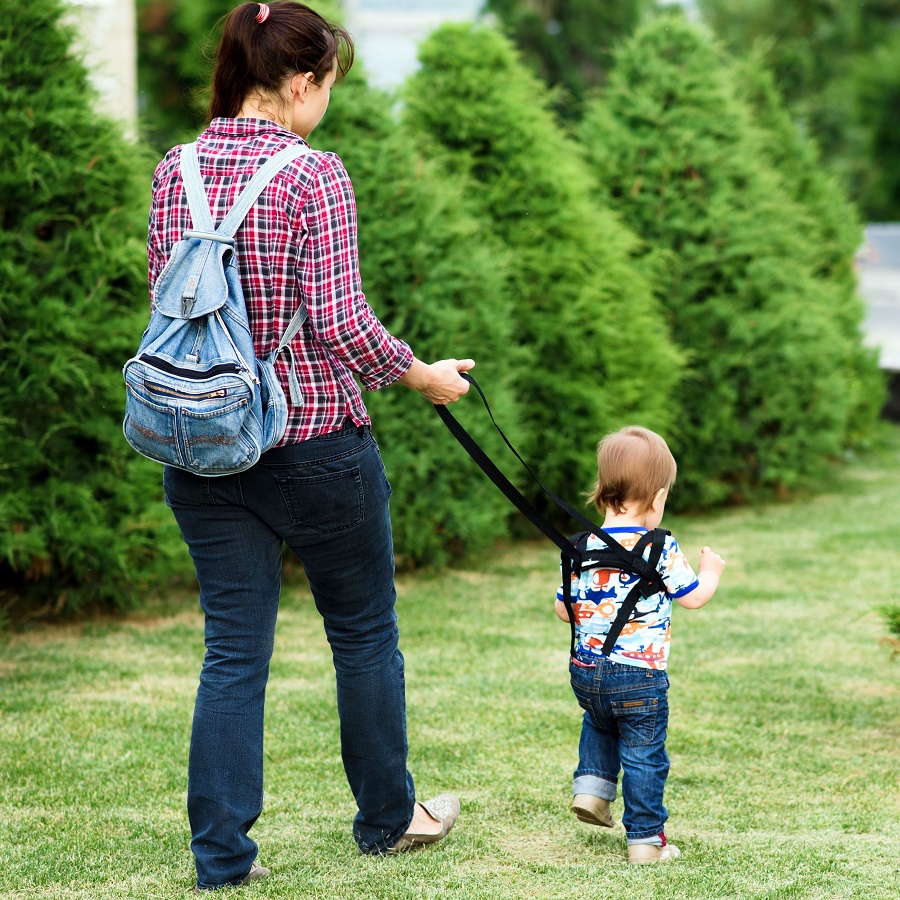
Societal Judgement of Leashing: The Parenting Culture Wars
Parenting choices often face society’s harsh scrutiny. Using a child leash is one such choice. It sparks a cultural battle, inviting public opinions and judgement. This section explores these societal reactions and their effects on parents.
When parents leash their child, they encounter varied reactions. Some onlookers nod in understanding, while others frown in disapproval. Social norms dictate that treating a child like a pet is wrong. Parents using leashes often feel judged and misunderstood.
This judgement can lead to shaming. Parent-shaming adds stress to the already challenging task of parenting. It can make parents doubt their choices, even if made with their child’s safety in mind. Some parents feel forced to defend their decision to use a leash for their child.
The controversy echoes through social media, parenting forums, and even casual conversations. Each faction, ‘pro-leash’ and ‘anti-leash,’ believes strongly in their viewpoint. This divide in opinions forms a cultural war over parenting styles.
Despite the judgement, many parents choose safety over public opinion. They use leashes to prevent their adventurous toddlers from running into danger. They prioritize their child’s well-being over societal norms.
Some critics argue that leashes limit a child’s growth and exploration. They see leashes as a symbol of overly controlling parenting. This notion adds fuel to the fire in the parenting culture wars.
Many parents seek a middle ground. They look for alternative methods of ensuring safety while avoiding judgement. Their goal is to nurture their child’s curiosity without inviting criticism.
Ultimately, the debate is not about the leash itself. It’s about the balance between safety, growth, and societal expectations. Parents must navigate this landscape, making the best decisions for their children, leash or no leash.






